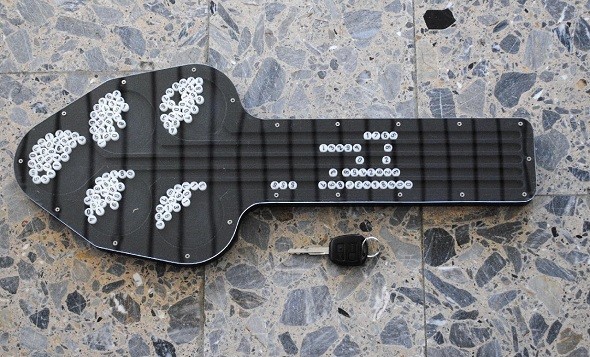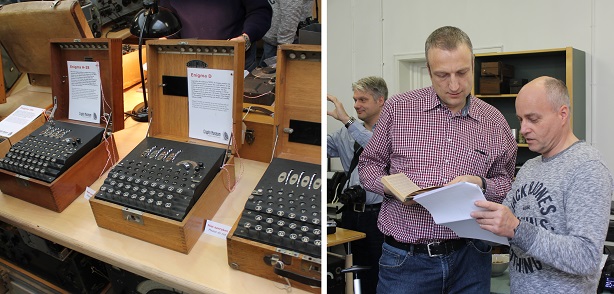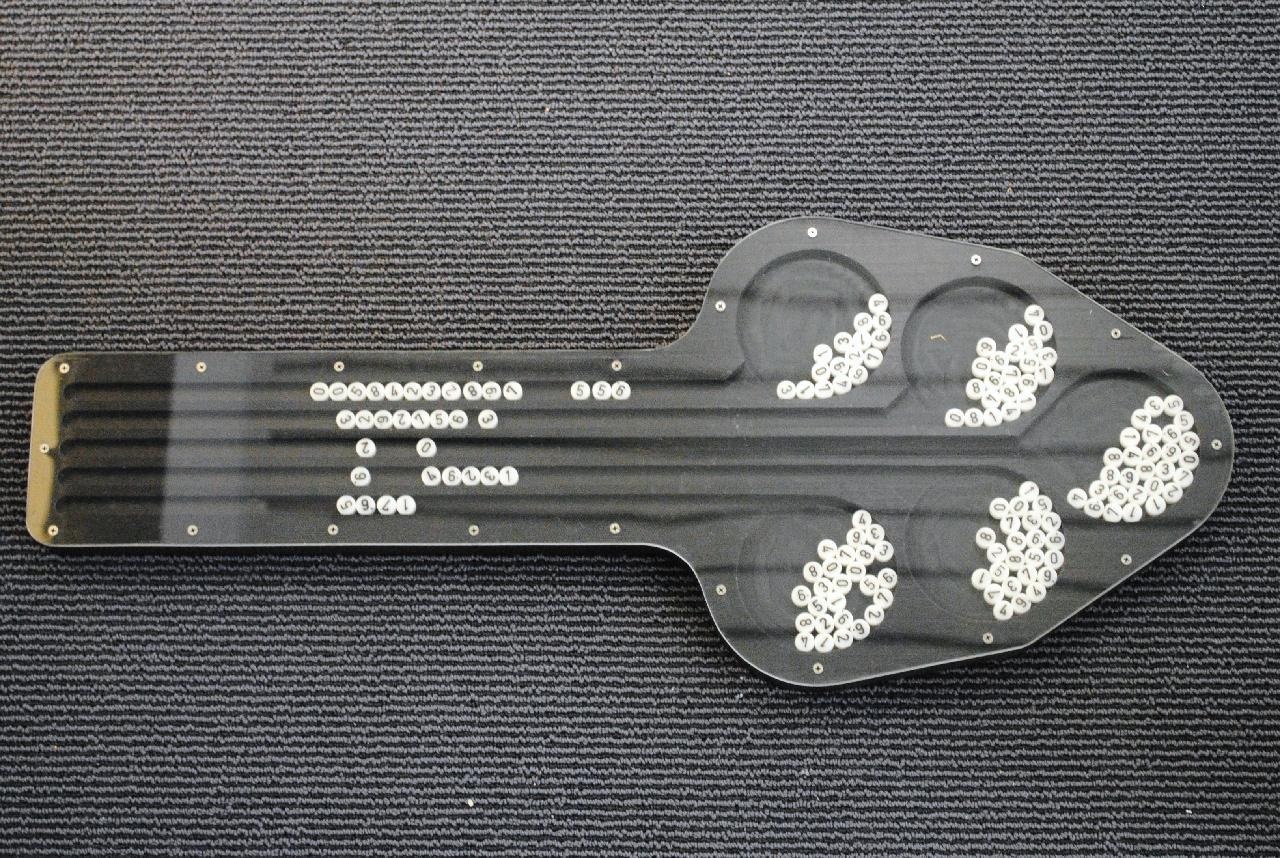In the 1950s the Germans used a unique crypto device named “Violine”. I have always wondered what it was used for. In a book about espionage I found the likely answer.
Last Saturday I was in Duivendrecht near Amsterdam to attend an exhibition named Secret Communications 2. This exhibition took place in the Arthur Bauer Museum. It featured a collection of antique radio devices provided by the museum owner. The other half of the exhibition showcased encryption machines mainly provided by collectors Paul Reuvers and Marc Simons.
A great collection of encryption machines
Of course, the encryption machine part was the more interesting one for me. It contained two Siemens & Halske Geheimschreibers, a Typex, cipher telephones, a Fialka, Hagelin machines and much more. On the following pictures you can see a few Enigmas (left) and me talking with blog reader Karsten Hansky.
Unfortunately, the Secret Communications 2 is limited to three days. The first exhibition day was Saturday, November 19. On November 19 and December 3 you will have to more chances to go there. I can only recommend to do so.
The Violine
At the exhibition, besides many interesting encryption machines, a copy of the book “Achtung Spione” was on display. This book (divided in two large volumes) contains much interesting information about espionage in the early Cold War. Cryptology only plays a minor role in it. However, one picture in the book immediately caught my attention. On page 252 of the second volume the following device is shown (for copyright reasons I have to use a different picture here, but it’s the same motif):
This device is a mechanical random number generator named “Violine” (German for “violin”). It is mentioned in my book Codeknacker gegen Codemacher. The Violine was used by the West German cipher authority in the 1950s. While it is clear that this device produces five digit random numbers, I have always been wondering what exactly it was used for.
In the afore-mentioned book I found the (likely) answer. Below the picture it says: “Violine […] for the simple use of the secure encryption algorithm ‘DEIN STAR’.”
In fact, the German secret service used a manual encryption algorithm named DEIN STAR in the 1950s. DEIN STAR is a variation of the One Time Pad. It was used by spies for encrypting short messages. It was secure and didn’t require treacherous crypto devices. How DEIN STAR works is explained on Jörg Drobick’s website. In the first step, the spy had to write down the following table (it is based on the password DEIN STAR):
\ 0 1 2 3 4 5 6 7 8 9 - D E I N S T A R 4 B C F G H J L M N O 5 P Q U V W X Y Z . ,
The words DEIN STAR were chosen because they contain the eight most frequent letters of the German language (E, N, I, S, R, A, T, D). Using this table a text can be written in numbers with the most frequent letters requiring only one digit (the same concept was used for the VIC cipher). For example, the message I HAVE A DREAM is coded as follows: 24484 05318 09184 7.
The result of this first step is now added to a numerical key that needs to be as long as the coded message (each digit is added seperately without carry). For instance, if the key is 0940385805 we get the following result:
Cleartext (coded): 24484 05318 09184 7 Key: 09403 85805 23804 3 Ciphertext: 23887 80113 22988 0
Now the obvious question is: was the Violine used for creating keys for the DEIN STAR algorithm? I think this makes sense. If a reader has more information about this question, I would be interested to learn.





Kommentare (7)